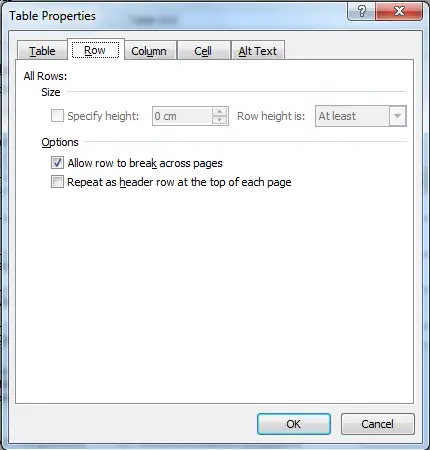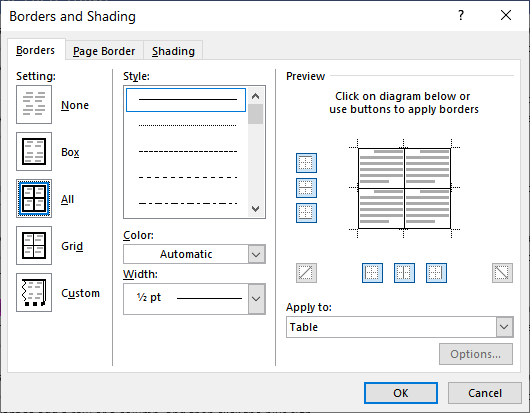

Word’s custom table styles are stored in the styles.xml file. If you follow this order, you’ll get a custom style in much less time than if, for instance, you try to start with the even and odd rows. It’s similar to the order in which we enter the information in an XML custom table style.
In word 2010 for a mac what does banded rows mean windows#
This sequence is how the table style dialogs in Word for Windows and Excel present table elements. This sequence moves from the general to the particular and also from the most common to the rarest formatting. Finally, we can spec special formatting for the cells in the 4 corners. Once these outer areas are formatted, we add layers for Even and Odd Row Banding and then Even and Odd Column Banding. We follow this with the Total Row, the bottom one. Then, we build layers on top of that base formatting that looks after the Header Row, probably the most common feature applied to tables. The base layer is any overall formatting that applies to the table as a whole. I find that it’s easier to format Office tables if I imagine that table formatting has layers. For typeface and size, alignment and weight/italic controls, read my post on Default Table Text The truth is that font styling in a table style is limited to setting bold or italic attributes, font color and whether the table component uses the Headings or Body font as specced in the Font Theme. Yes, I know the Word and Excel table style tools have font formatting dropdowns, yes I know Microsoft help files say that font styling is included in table styles. Let’s start by making one thing clear: table styles do not format the font choice or size contained in the tables. It’s not a simple subject, but understanding this will also help you if you’re trying to create custom table styles in Word for Windows or Excel, which actually have tools to do this in the respective programs. You just have to hack some XML!įirst we have to cover how Office programs create custom tables. But if you’re using PowerPopint, you can still create custom table styles.

It’s possible to create custom styles in Excel and Word for both Windows and Mac using the program interface. Microsoft Office programs include a pile of table styles that are auto-created by the software, but they all have that generic MS look. For branded documents, you want to have a unique table style.


 0 kommentar(er)
0 kommentar(er)
